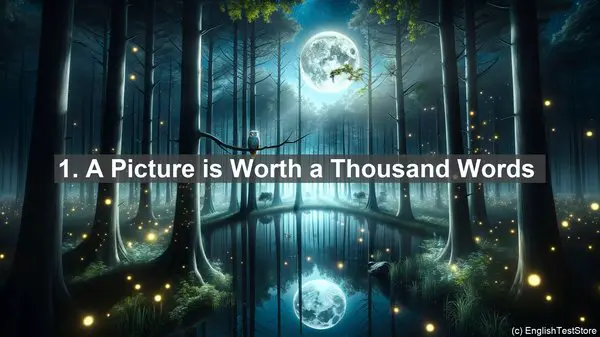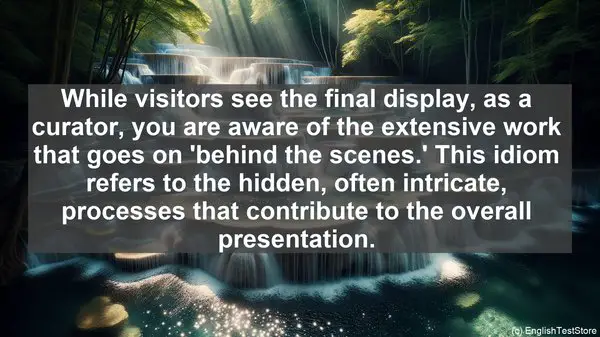1. A Picture is Worth a Thousand Words
As a museum curator, you understand the power of visual representation. This idiom emphasizes the idea that a single image can convey a complex message or story more effectively than a thousand words.

2. In the Limelight
When a particular exhibit or artwork gains significant attention, it is said to be ‘in the limelight.’ This idiom alludes to the intense focus and scrutiny that comes with being in the center of attention.
3. Behind the Scenes
While visitors see the final display, as a curator, you are aware of the extensive work that goes on ‘behind the scenes.’ This idiom refers to the hidden, often intricate, processes that contribute to the overall presentation.
4. Labors of Love
Curating a museum involves countless hours of dedication and passion. ‘Labors of love’ denotes tasks that are undertaken not for monetary gain but out of deep affection and commitment.
5. A Touch of Class
When an exhibit or arrangement exudes elegance and sophistication, it is said to have ‘a touch of class.’ This idiom emphasizes the refined and high-quality nature of the work.

6. A Labor of Hercules
Some projects in the museum world can be exceptionally challenging. ‘A labor of Hercules’ refers to a task that requires immense effort, often involving multiple obstacles and complexities.
7. In the Same Boat
Collaboration and teamwork are crucial in the museum field. ‘In the same boat’ signifies being in a similar situation or facing a common challenge, often implying the need for collective action.
8. A Hidden Gem
Museums often house lesser-known but remarkable artifacts. Such pieces are described as ‘hidden gems’ – treasures that may not be widely recognized but possess immense value and beauty.
9. A Feast for the Eyes
A visually stunning exhibit that captivates viewers is ‘a feast for the eyes.’ This idiom conveys the idea of a rich, delightful experience, much like a sumptuous meal.
10. The Tip of the Iceberg
When visitors see a small portion of a vast collection, they are only seeing ‘the tip of the iceberg.’ This idiom suggests that there is much more beneath the surface, waiting to be explored.
